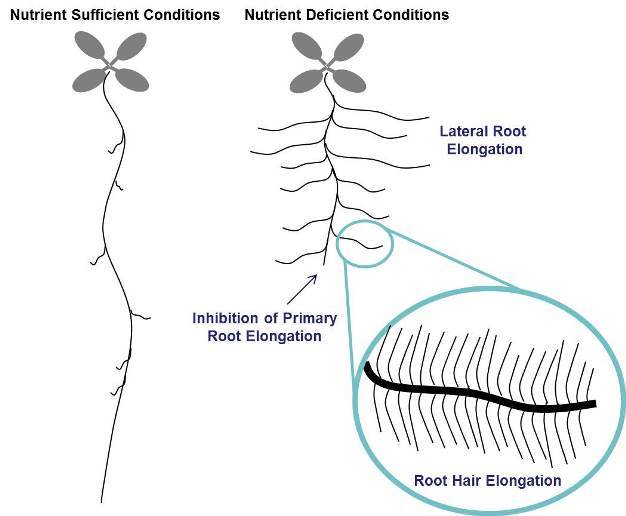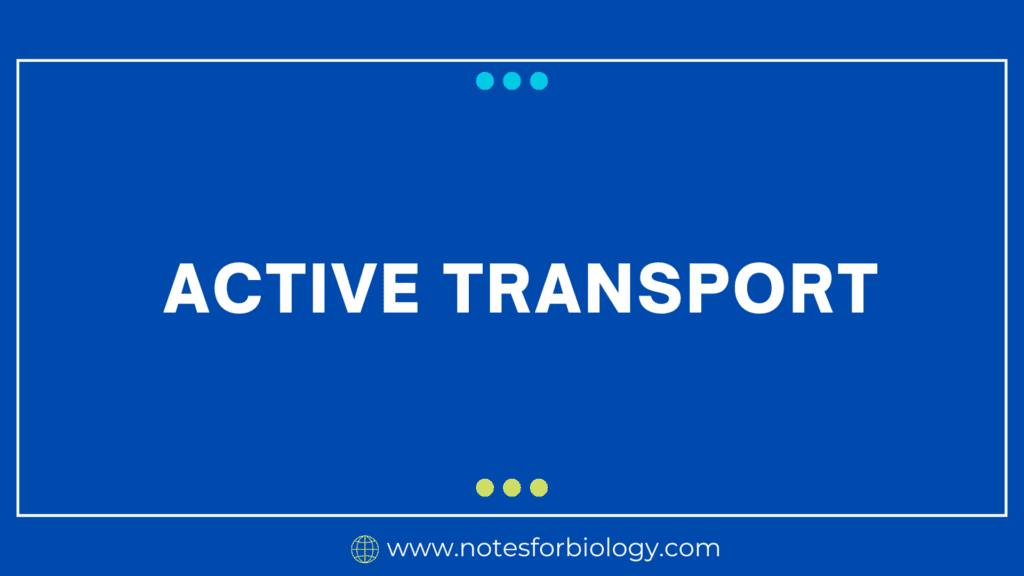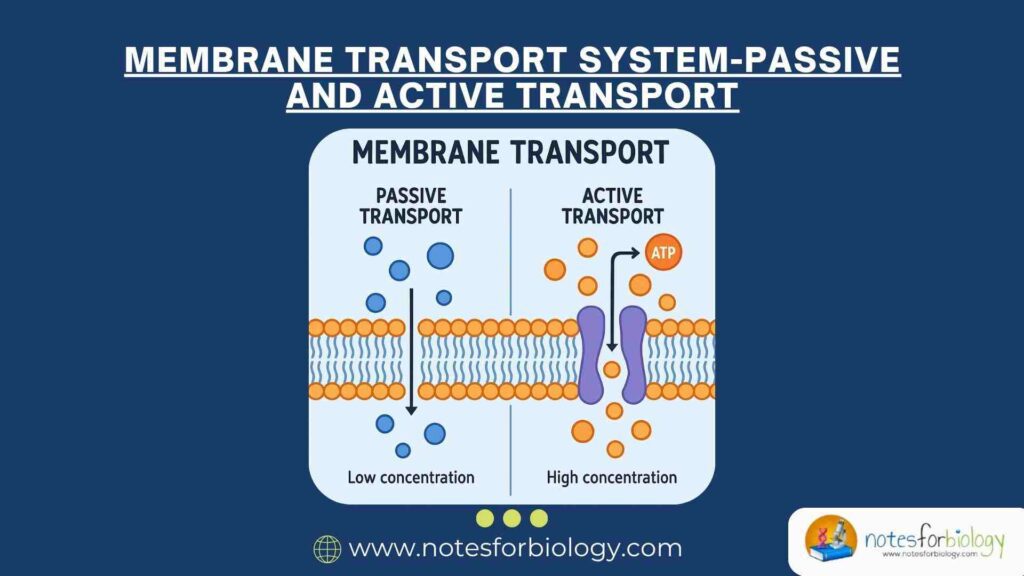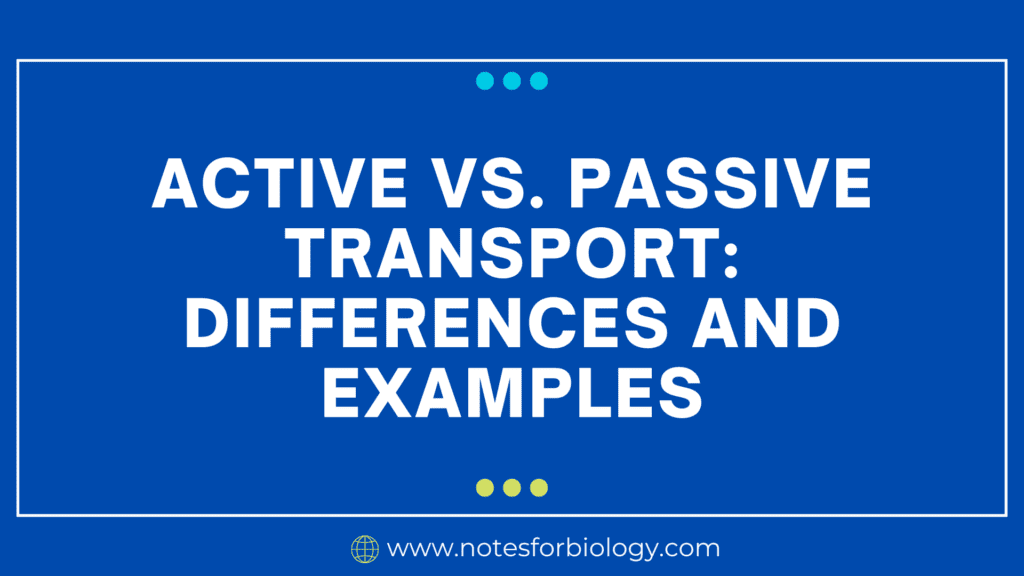Active transport is the process by which chemicals are transferred from a region of lower concentration to a region of greater concentration across a cell membrane against the gradient of their concentration. Since this process is operating against the direction that diffusion naturally takes, energy, often in the form of adenosine triphosphate (ATP), is required.
Definition
The process of moving molecules against a gradient or an obstruction from an area of lower concentration to a region of greater concentration while utilizing external energy is known as active transport.
Important characteristics
1. Energy Requirement
Energy for active transport is normally obtained from the hydrolysis of ATP, in contrast to passive transport.
2. Specificity
It is systems have a high degree of specificity they frequently use pumps or carrier proteins that are only attracted to certain ions or molecules.
3. Directionality
In contrast to passive transport, this mechanism transports chemicals from areas of lower concentration to areas of higher concentration.
Types
Primary Active Transport
Molecules are transported using this form of transport directly powered by ATP.
Sodium-Potassium Pump (Na/K-ATPase) is one example.
Among the best-known applications of primary active transport is this one.
Against their respective concentration gradients, the pump transfers two potassium ions (K⁺) into the cell and three sodium ions (Na⁺) out of the cell.
One ATP molecule is hydrolyzed during the process, providing the energy required for the pump protein’s conformational modifications.
The Sodium-Potassium Pump Steps:
Binding: The pump binds to three cytoplasmic Na+ ions.
Phosphorylation: The pump undergoes phosphorylation following ATP hydrolysis, which modifies its shape.
Na+ Ion Release: The Na+ ions are released into the extracellular region via the pump.
K⁺ Binding: Two K⁺
Mechanism of Secondary Active travel (Co-Transport)
This mode of travel operates without the direct utilization of ATP. On the electrochemical gradient produced by primary active transport, instead, it depends. Two primary categories of secondary active transport exist:
Symport: Across the membrane, both molecules go in the same direction.
Example: The sodium-glucose co-transporter (SGLT) co-transports glucose into the cell against its concentration gradient by using the Na/K gradient created by the Na/K pump.
Molecules that antiport travel in opposing directions.
As an illustration, the sodium-calcium exchanger (NCX) exports calcium ions from the cell by using the energy from the input of Na+ ions
Importance
1. Nutrient Uptake

Even though glucose and amino acids are found in larger amounts inside the cell, cells nonetheless utilize active transport to take up these vital nutrients.
2. Ion balance
Preserves critical ion gradients across membranes, which are necessary for heartbeat, muscular contraction, and nerve impulse transmission.
3. Cell Volume Regulation
By regulating the intracellular concentrations of different ions, it aids in the regulation of both cell volume and osmotic equilibrium.
Process of Active Transport
1. The molecule or ion’s binding to the transport protein
The transport protein, which is embedded in the cell membrane, has a particular location where the molecule or ion that has to be transported binds. This precision guarantees the transportation of just the appropriate compounds.
2. Modification of the Transport Protein’s Conformation
The transport protein undergoes a conformational shift upon molecule or ion binding. This shift is frequently propelled by the energy obtained from an ion gradient in secondary active transport or the hydrolysis of ATP in primary active transport.
3. Translocation Through the Membrane
The molecule or ion is transported across the cell membrane by the transport protein’s conformational shift. This motion is propelled by ATP directly in primary active transport. The energy stored in the gradient of another ion—typically a proton or sodium—drives secondary active transport.
4. Release of the Ion or Molecule:
The molecule or ion is released on the other side of the membrane once it has been transferred across. The transport protein frequently returns to its initial shape in response to this release, making it prepared to begin a new cycle.
5. The Transport Protein is reset:
When ATP-driven pumps are involved, the transport protein often regains its natural form by releasing any attached phosphate groups, allowing it to become ready for binding.
Examples
- Macrophages’ phagocytosis of microorganisms.
- Ca2+ ions leaving the heart muscle cells.
- amino acid transport across the human gut’s intestinal lining.
- secretion of proteins from many cells, including enzymes, peptide hormones, and antibodies.
- White blood cell function involves defending our body from pathogens and other external invaders by fighting them.
Frequently Asked Question
1. What is active transport?
Active transport is a cellular process in which molecules or ions are moved across a cell membrane against their concentration gradient, requiring energy input, usually in the form of ATP
2. What is an example of primary active transport?
The sodium-potassium pump (Na⁺/K⁺-ATPase) is a well-known example. It moves three sodium ions out of the cell and two potassium ions into the cell, using energy from ATP
3. What is an example of secondary active transport?
The sodium-glucose co-transporter (SGLT) is an example. It uses the sodium gradient created by the Na⁺/K⁺ pump to transport glucose into the cell.
4. Can active transport occur without ATP?
Direct active transport cannot occur without ATP. However, secondary active transport does not directly use ATP but relies on the ion gradients created by primary active transport, which uses ATP
Related Article



